


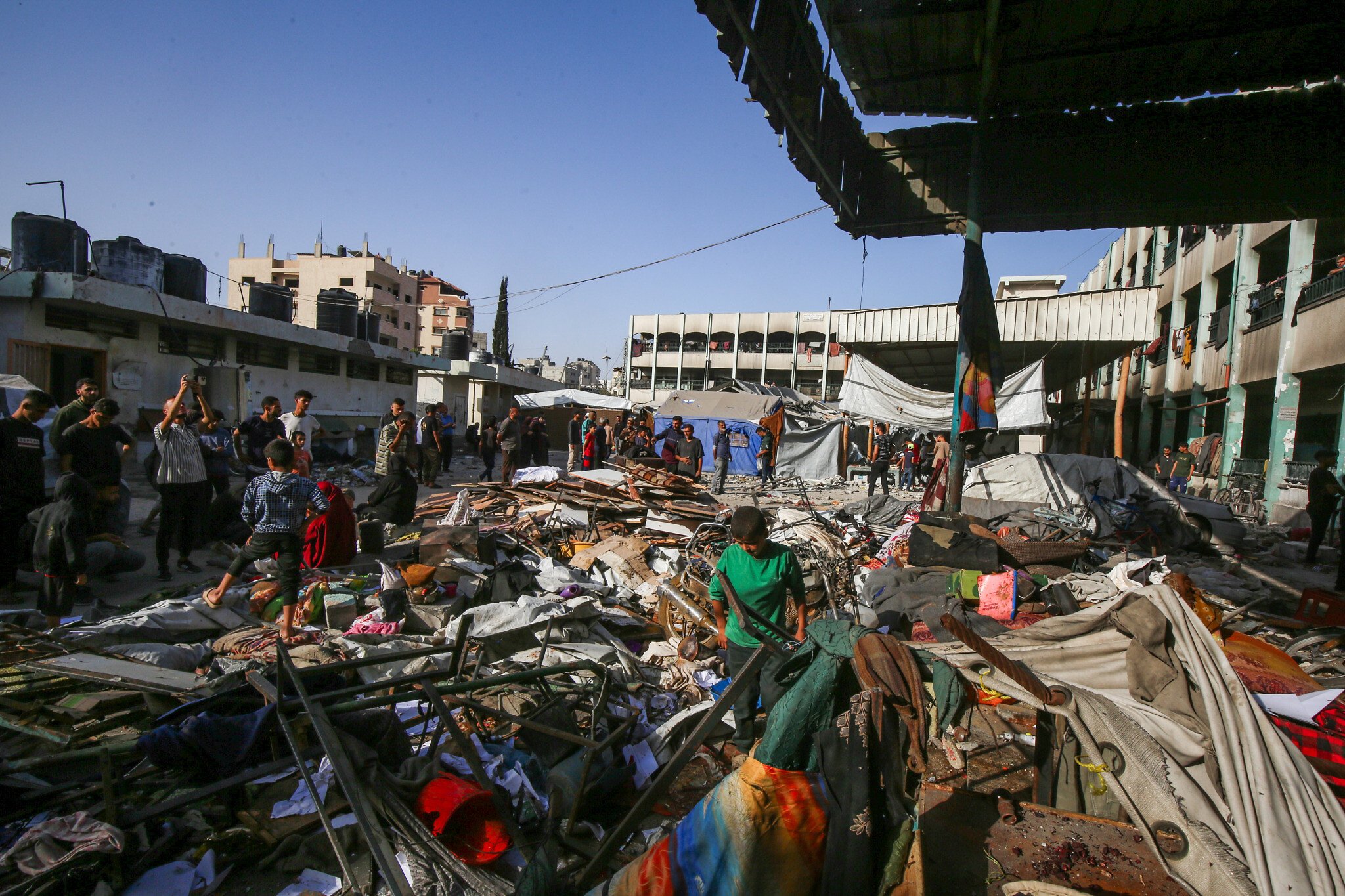
Hamas on Monday executed four men for looting some of the aid trucks that have begun entering Gaza, according to sources familiar with the incident, as a clan leader in southern Gaza issues a challenge to the terror group over guarding the convoys.
One source said the four were involved in an incident last week in which six security officials were allegedly killed by an Israeli airstrike as they were working to prevent gang members from hijacking aid trucks.
“The four criminals, who were executed, were involved in the crimes of looting and causing the death of members of a force tasked with securing aid trucks,” a source told Reuters.
Seven other suspects are being pursued, according to a statement issued by a Hamas-led umbrella group identifying itself as the “Palestinian Resistance.”
Hamas, which took power in Gaza in 2007, has long cracked down hard on signs of dissent among Palestinians in Gaza but it has faced sizable protests in recent months over the war and challenges to its control by armed groups of looters, some of whom it has punished by shooting them in the legs in public.
Yasser Abu Shabab, a leader of a large clan in the Rafah area, which is now under full Israeli army control, said he was building up a force to secure aid deliveries into some parts of the enclave. He published images of his armed men receiving and organizing the traffic of aid trucks.
Hamas, which is unable to operate in the Rafah area where Abu Shabab has some controls, has accused him of looting international aid trucks in previous months and maintaining connections with Israel.
On a Facebook page bearing his name, Abu Shabab denied that he has acted as an alternative to the government or other institutions and rejected accusations of looting.
On the page Abu Shabab is described as a “grassroots leader who stood up against corruption and looting” and who protected aid convoys.
But a Hamas security official called Abu Shabab a “tool used by the Israeli occupation to fragment the Palestinian internal front.”
Asked if the UN was working with Abu Shabab, a spokesperson for the UN humanitarian agency OCHA said it did not pay anyone to guard aid trucks.
“What we do is talk to communities regularly, build trust and engage with the authorities on the urgent need for more aid to come in through more routes and more crossings,” the spokesperson said.
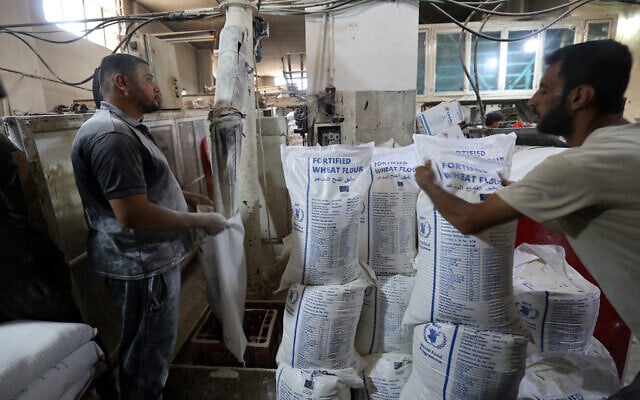
Aid groups have said that deliveries have been hampered by looting, claiming Israel is to blame for creating a situation in which hundreds of thousands of people have been driven to desperation by aid blockade.
Israel has accused Hamas of stealing aid, and says aid needs to be tightly controlled to prevent it from helping the terror group, which is still holding 58 hostages.
Israeli military officials have said the security teams put in place by Hamas are there to take delivery of the supplies, not to protect them, but it has provided no evidence of Hamas looting since it eased its blockade last week.
Israel on Monday confirmed that that the distribution of assistance under the Gaza Humanitarian Foundation had begun, launching a system that Israel says is meant to keep aid from being diverted to the Hamas terror group.
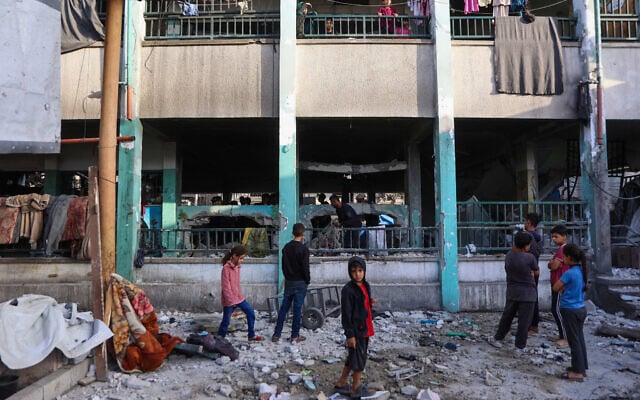
The efforts to bring aid into Gaza came amid a continued Israeli offensive.
The Israeli military said Monday morning that it carried out a strike overnight against “key terrorists” who were embedded within a school-turned-shelter in Gaza City’s Daraj neighborhood.
According to Palestinian media, at least 36 people, including children, were killed in the strike on the Al-Jarjawi School.
The IDF said that the school was being used by Hamas and the Palestinian Islamic Jihad as a command center.
“The command and control center was used by the terrorists to plan and gather intelligence in order to carry out terror attacks against Israeli civilians and IDF troops in the area,” the military said.
The military said it took “many steps” to mitigate civilian harm, including by using a precision munition, aerial surveillance, and other intelligence.
The strike sparked a number of fires in the area and according to images circulating on social media, some of the bodies were badly burned.
The footage could not be verified by Reuters.
Meanwhile, the IDF Monday reissued a wide evacuation warning for the entire Rafah and Khan Younis area in the southern Gaza Strip, ahead of a planned major ground offensive.
The military called for Palestinians residing in areas marked on a map in red to evacuate westward toward the Mawasi area on the coast, which Israel is set to declare as a “safer zone.”
“The IDF will launch an unprecedented attack to destroy the capabilities of terror organizations [in this area],” said the military’s Arabic-language spokesman, Col. Avichay Adraee.
He says that the evacuated area is considered “a dangerous combat zone.” The evacuation warning does not include the Al-Amal and Nasser hospitals, Adraee added.
On March 31, the IDF issued an evacuation warning for all of Rafah and the southern part of Khan Younis, and on May 19, ordered the rest of Khan Younis to also evacuate.
The latest order covers the same areas previously ordered to be evacuated.
In addition to the aid blockade, UN officials said that the risk of famine was further being exacerbated because under five percent of Gaza’s farmland is usable due to the war.
By the end of April, more than 80 percent of the farmland was damaged and 77.8 percent was no longer accessible, leaving barely 4.6 percent of potentially arable land, according to a new satellite assessment released by the United Nations’ Food and Agriculture Organization.
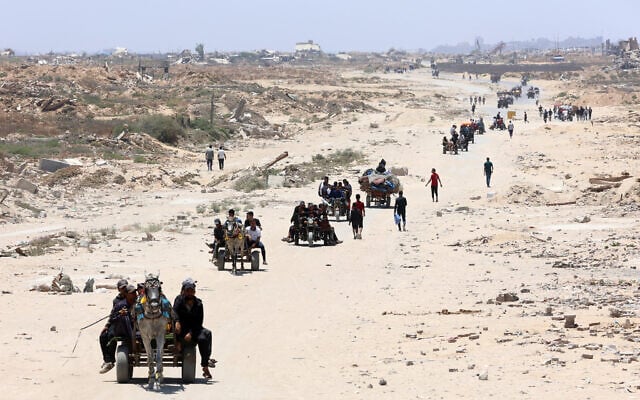
Some 688 hectares (1,700 acres) is all that remains for cultivation, according to the assessment.
The situation is particularly critical in southern Gaza’s Rafah and in some northern areas, where nearly all cropland was not accessible.
“With cropland, greenhouses, and wells destroyed, local food production has ground to a halt,” said Beth Bechdol, FAO deputy director-general.
Before the start of the war, agriculture accounted for approximately 10 percent of Gaza’s economy, with more than 560,000 people relying at least partially on farming, herding or fishing, FAO said.
In addition to the near-complete destruction of Gaza’s arable land, the World Health Organization said on Monday that the majority of stocks of medical equipment have run out in Gaza, while 42% of basic medicines including pain killers are out of stock.
“We are at stock zero of close to 64% of medical equipment and stock zero of 42% of essential medicines and vaccines,” Hanan Balkhy, the WHO’s regional director for the Eastern Mediterranean told reporters in Geneva.
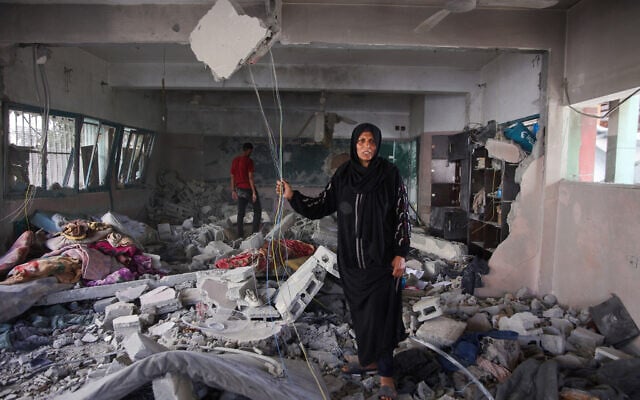
The Israeli military has stepped up its Gaza operations in recent days in what it has described as a renewed push to destroy Hamas. It has called for the evacuation of civilians from large swaths of the enclave, including the entire cities of Rafah and Khan Younis in the southern Strip.
Gaza’s health ministry said Sunday that at least 3,785 people had been killed in the territory since the latest ceasefire collapsed on March 18, taking the war’s overall toll to 53,939 — a figure that cannot be verified and does not differentiate between civilians and fighters.
The war broke out on October 7, 2023, when Hamas-led terrorists invaded Israel, killing some 1,200 people, mostly civilians, and kidnapping 251. Terror groups in the Gaza Strip are still holding 58 hostages, including 57 of the 251 abducted on October 7.
